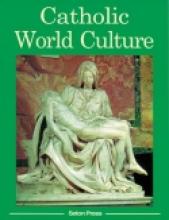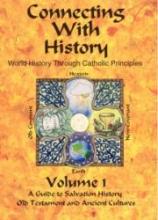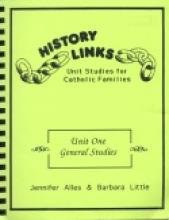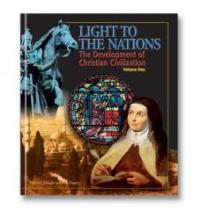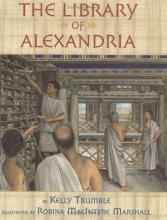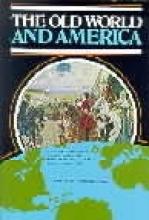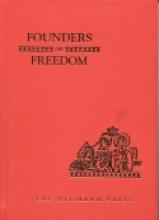World History Elementary
Catholic World Culture
When I first saw Catholic World Culture it appeared to be a rather dry and boring book, but after reading a few paragraphs I was convinced that it would hold my children's attention and excite them about the Faith and history. My oldest son told me that he found it interesting and inspiring, as well as a great source for trivia with which he could impress his friends (a humble child as you can imagine.)
Each of the 30 chapters in this 124 page full color book focus on a specific country, Catholic personality or event. Some of the topics covered include: "The Artist of Mysteries" (da Vinci/Italy), "God Alone Sufficeth" (St. Teresa of Avila/Spain), "Martyrs and Miracles (The Netherlands), "Conversions in the North" (Scandinavia). The chapters end with "Thinking Over" prompts which lead to several interesting discussions in our family.
We attempted to use this as part of a chronological history program and it just did not work, but as part of a geography or religion program or as a supplement to history it was ideal. Best suited for 8th-12th.
Connecting with History Vol. I
History Links - General Studies and Ancient Egypt
Light to the Nations
The Library Of Alexandria
My fourth grader and Classics-minded daughter loved this one! The product description does a good job of explaining what the book is all about:
The Library of Alexandria was the largest library of its time and a major center for learning and scholarly research, particularly in the fields of astronomy, geography, mathematics, and medicine. Caesar and Cleopatra, Erastosthenes and Euclid, Archimedes and Alexander the Great are just a few of the famous people connected to its story. Today, historians still argue about how the library was destroyed, and no one knows exactly what it looked like, yet there is no question that the library continues to fascinate and intrigue us. This extensively researched look at what we do know about the Library of Alexandria features Kelly Trumble"s short, accessible chapters, and richly detailed full-color paintings by Robina MacIntyre Marshall. Together, they tell the story of one of the wonders of the ancient world, and show how its influence as continued long after its destruction. Glossary, suggested reading, selected bibliography, index.
The Old World and America
We are presently in the early chapters of this text, but the flavour of the book is apparent. Each chapter is amply illustrated with photos, diagrams, and maps (all black and white). Following each chapter is a series of tests, which include oral questions, written questions, discussion questions, word list, questions to make you think, and questions that test your character. What more could a homeschool mother ask for?
The book is reasonably priced. With older children, some supplementary material may be needed to cover various topics in more detail. It is my opinion that this is a wonderful book, and would be an asset to any history program. It would be suitable for a variety of ages (presently, I am using it for Grades 4 to 8).
Founders of Freedom
The text is readable and interesting (although do keep in mind that I LOVE history), but still rather textbookish. Because it is an overview, many topics are covered rather briefly and the "stories" of history aren't present. There are a rather large quantity of written problems, activities and other reviews designed to reinforce the ideas in the text. I would be inclined to only use some of the written problems and instead supplement with some "living books" (stories from History), such as those listed on our Timeline of Good History Reading.

